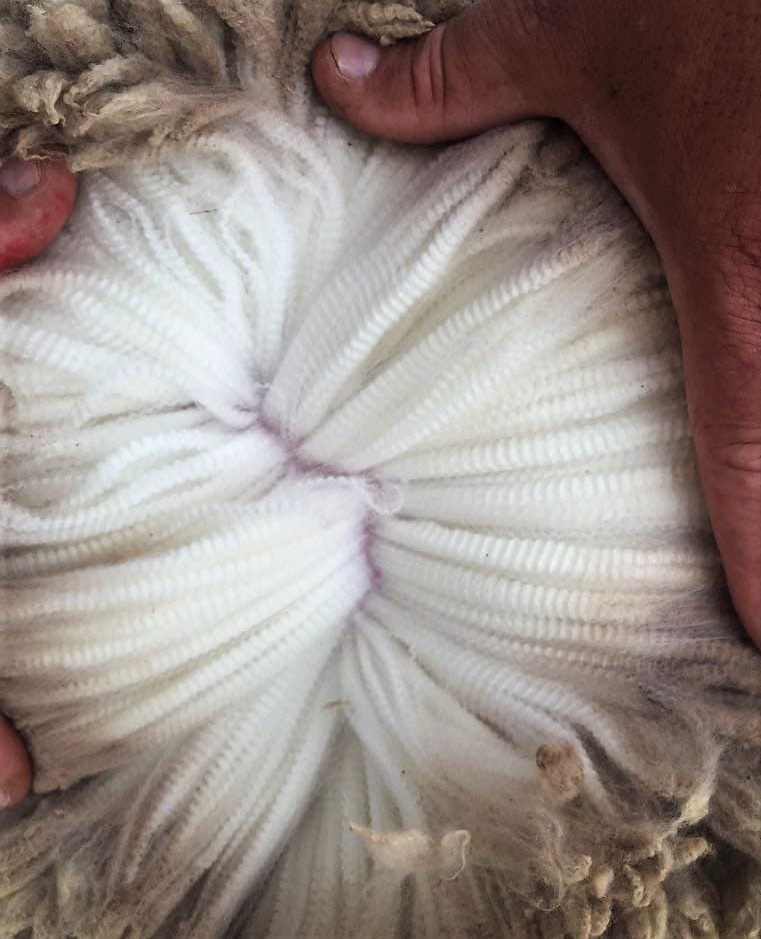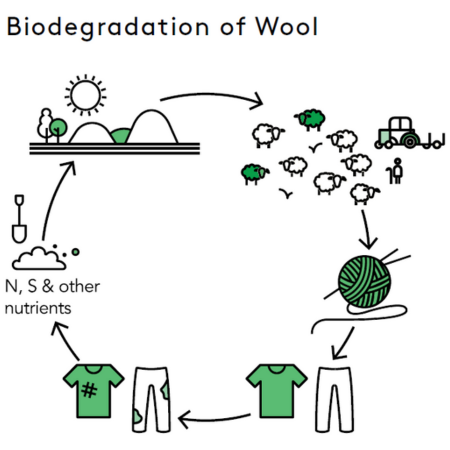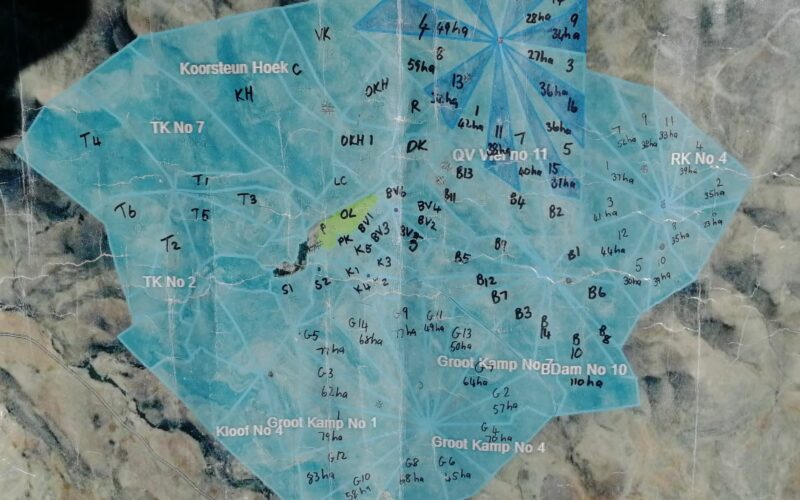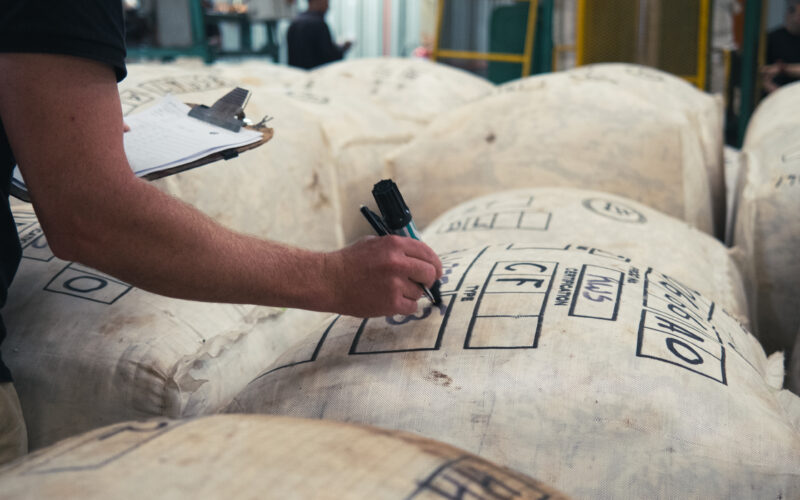There are two main families of textile fibres used in our clothing: natural fibres and chemical fibres. Natural fibres are fibres produced by animals (wool, cashmere, mohair…) or plants (linen, hemp, cotton…). They grow or develop in nature, unlike chemical fibres which are the result of industrial production by man.
Chemical fibres include man-made fibres made from natural raw materials such as wood cellulose (Viscose, Modal, Tencel, etc.) and synthetic fibres made from hydrocarbons such as petroleum (acrylic, polyester, polyamide, lycra, etc.).
Wool is a textile natural fibre derived from sheep’s fleeces and has been used for thousands of years. It is recognised and appreciated for its many intrinsic qualities.
Properties and benefits of sheep’s wool
Wool is renowned for its exceptional insulating properties. It is able to retain air, which keeps it warm in winter and cool in summer. Hydrophilic and breathable, it can absorb up to 30% of its weight in water without appearing wet. It is an ideal fibre for sporting activities.
Another notable feature of natural wool is its resilience. Wool fibres can bend thousands of times without breaking and still return to their original shape, giving wool textiles remarkable durability. Wool is naturally flame-resistant, does not melt and burns without emitting toxic fumes.

Sheep’s wool: a fibre that is part of the natural carbon cycle
In terms of environmental impact, wool has several advantages over synthetic fibres. As a natural fibre, it is biodegradable and does not contribute to microplastic pollution. It is also the most recycled fibre in the world today.
(IWTO Picture)

However, sheep farming, and animal farming in general, poses challenges in terms of pasture management and methane emissions.
Initiatives are underway to make wool production even more sustainable. Certifications such as Abelusi® Wool in South Africa certify practices that respect people, animal welfare and the environment. The transition of farmers to regenerative farming practices, where animals are part of the solution to regenerate the soil, biodiversity, … is underway with Segard Masurel South Africa.
These efforts aim to minimise the ecological footprint of wool while maximising its environmental, economic and social benefits.
In a nutshell, why choose a natural textile fibre like wool?
Unlike synthetic fibres produced industrially from non-renewable fossil materials, natural fibres are the result of a natural process based on a few simple ingredients, such as water, air, grass and sunlight.
Wool, with its many properties, remains an essential textile fibre in modern society. Its ability to combine comfort, durability and respect for the environment makes it a preferred choice for those looking for high-quality textiles that meet today’s challenges. By continuing to promote sustainable and responsible practices in the production and processing of wool, this natural fibre can play a major role in the transition to a fashion and lifestyle that meets climate and social challenges.
Would you like to act or find out more about Abelusi® Plus, our programme to help livestock farmers switch to regenerative farming practices in South Africa? Contact us !




